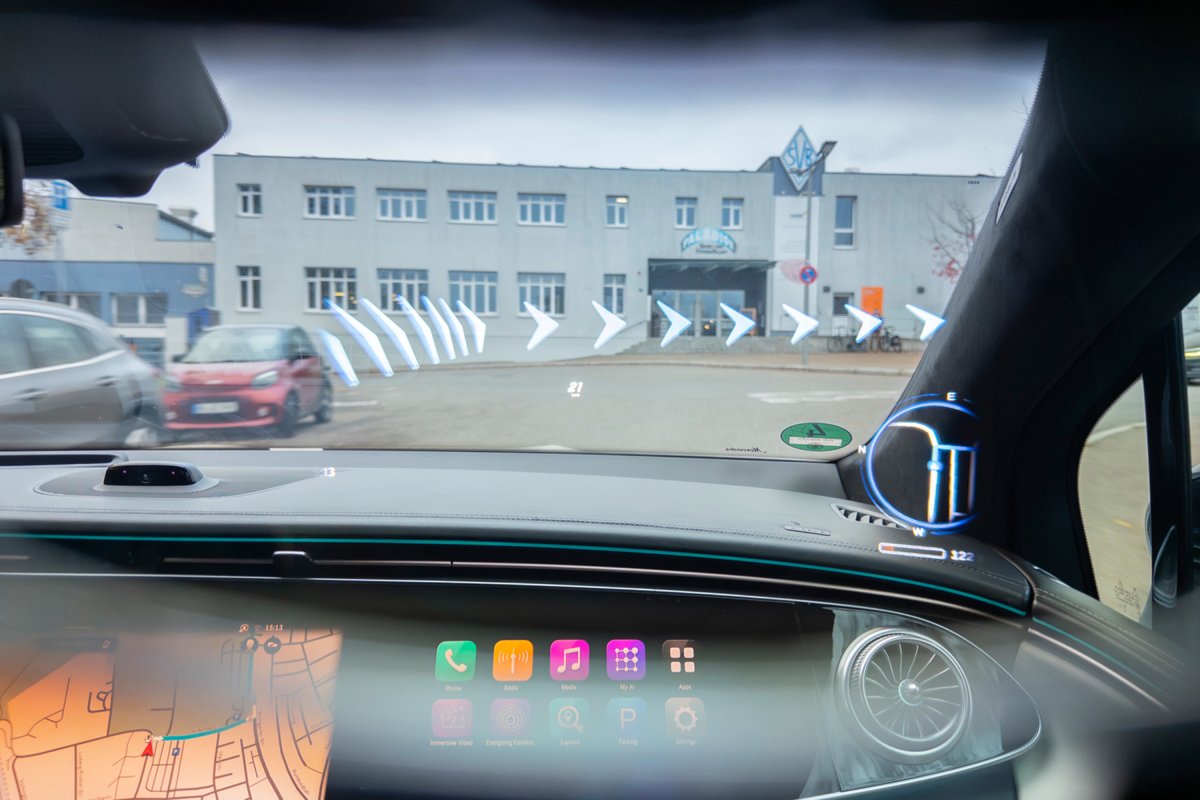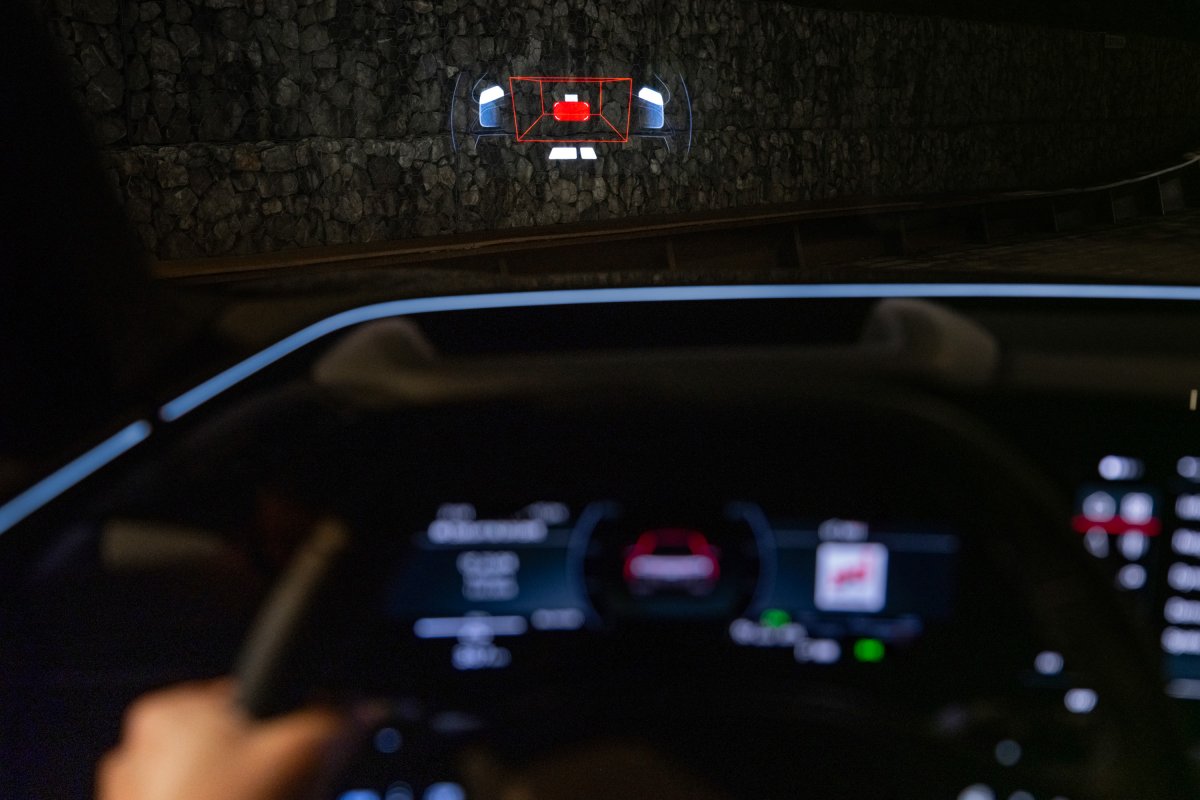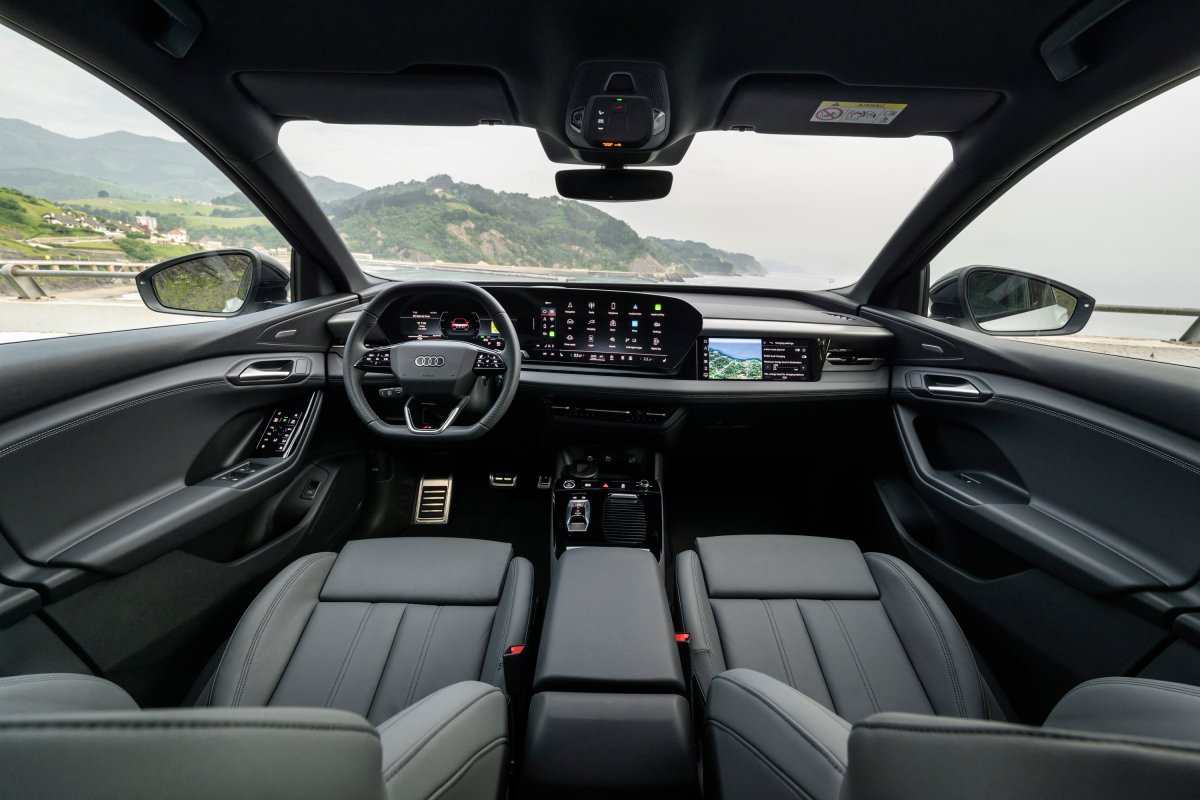Reality is changing. The views drivers and passengers have as a car is driven down the road is being enhanced by technology.
Augmented reality (AR) overlays digital information, either via glasses or a projected screen on top of what the user sees in the real world. It's different than virtual reality, which uses a headset to mask the rest of the world so the user can be completely immersed in whatever they're doing be it playing a video game or watching a sporting event thousands of miles away.
Audi, Mercedes-Benz, BMW and others have installed AR in their cars. The technologies range from enhanced views on infotainment touchscreens when navigation is active to more advanced versions of a traditional head-up display.
A head-up display typically projects information like speed, gear, music track or navigation prompts beyond the windshield so a driver can see them and take note without taking their eyes off the road.
Larger and smaller AR displays are coming. They can now project graphics on a larger portion of the window, incorporating real world objects like street signs, roads markings and driver assistance features.
Several years ago, the battery-electric Audi E-Tron sport utility vehicle (now called the Audi Q8 E-Tron in its second generation) overlayed arrow graphics over a camera view of an intersection as a driver approached, showing where to turn. Mercedes offered similar technology in the C-Class sedan around the same time.

The new Audi Q6 E-tron SUV features an optional augmented reality head-up display much larger than the typical display. It showcases the same information as the screen-camera combo previously did, but in the immediate line of sight of the driver.
There are also animations on the display that signal things like speed limit changes as you approach a sign marking where the speed changes, rather than just the traditional static numbers change other automakers offer.
Audi says the forward tilt of the 88-inch image plane in the Q6 E-tron enhances the AR experience by aligning with the natural focus of the human eye. The tilt combined with the large virtual image distance, can make icons look like they're floating up to 200 yards away.
"Due to the high image distance from the driver, the eyes do not need to refocus between the real environment and the head-up display (HUD) image. This is the biggest advantage of a HUD compared to a dashboard display. This is also a great advantage for people with corrective lenses," an Audi spokesperson told Newsweek.
Entertainment options are also moving to the HUD in Audis. "When parked, drivers can also play games using the HUD; for example, while waiting for their vehicle to charge at a DC fast charger location. In the future, you might imagine additional entertainment tools as well," the spokesperson said.

BMW is expanding its user experience on the new versions of its vehicles, production versions of which will be shown at CES 2025. The system allows visible displays across the entire width of the windscreen, including for passengers. The system is complemented by a dark screen with bright graphics at the lower edge of the windscreen for basic information.
"The windscreen becomes a single large display with our new BMW Panoramic Vision, opening up completely new possibilities for the design of our vehicles. Whether the driver decides themselves which information they want to display in their own field of vision, or that all occupants can see the entire content," Frank Weber, member of the Board for Development at BMW AG said in a press release.
"The revolutionary projection and the significantly more clearly structured cockpit give an impressive new feeling of space and driving. We are taking our proven 'eyes on the road – hands on the wheel' slogan to a new level," he said.
In 2021, Mercedes premiered its augmented reality head-up display on the luxury S-Class sedan. The graphics projection equates to 77-inches of screen and integrates eye-tracking technology to keep icons in the driver's field of view. It's currently available on the S-Class, Mercedes-Maybach S-Class and EQS Sedan and SUV.

"An augmented reality heads-up windshield (AR HUD) provides enhanced safety by projecting critical information directly onto the windshield, reducing the need for drivers to look away from the road. It also offers improved navigation with real-time overlays and can display alerts and warnings in the driver's line of sight, making driving more intuitive and less distracting," a Mercedes spokesperson told Newsweek.
Looking forward, the company is experimenting with augmented reality glasses to offer a new driving experience. It wants to use a "Bring Your Own Device" (BYOD) approach, so customers can bring their own equipment, "adapted to their eyesight and ecosystem." The company says they would allow easier integration, and that linking with vehicle sensors and actuators could present new opportunities for entertainment, wellness and comfort, in addition to safety.
Mercedes also wants to use augmented reality glasses for immersive virtual brand experiences. It would allow interaction with vehicles and customization for prospective buyers. The new Mercedes-Benz mixed reality configurator uses real-time game engines and Apple Vision Pro.
"Initial use cases will focus on infotainment for passengers (4D cinema experience, wellness, energizing comfort, POIs, etc.), followed by driver-related use cases (navigation, assistance, etc.). We see AR glasses as a device that extends our infotainment system and offers an enhanced visual experience for our customers. All basic functions will remain accessible without the use of glasses. As such a device, it opens new and more flexible possibilities for designing the interior of our vehicles," a Mercedes spokesperson said.
Audi is also studying mixed and augmented reality glasses. Its Activesphere concept incorporated mixed reality headsets, available for both driver and passenger. Audi explained that the user could view virtual static content that would become interactive when the driver or passenger engaged using gestures.
"Of course, the Activesphere concept was also designed for autonomous driving, so more driver interaction could be facilitated (i.e. they didn't need to be paying 100 percent attention to the road). For the time being, we feel the augmented reality HUD is the best solution for drivers today as a way of safely being engaged in the driving process whilst still providing the added benefit of additional driving information," an Audi spokesperson said.








.png)








:quality(85):upscale()/2024/04/24/878/n/3019466/36c5693c662965c5d1ce91.72473705_.jpg)


 English (US) ·
English (US) ·